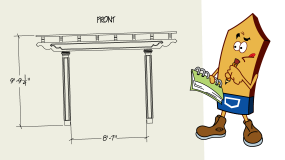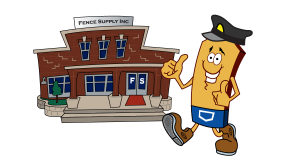Fence Post Wood Choice and Spacing Guide for Privacy Fence
Things you will need
The primary materials you will need in your privacy wood fence are the wooden post, the horizontal wood railings, and the wood fence panels. The number of these materials will vary depending on the length of the fence.
Choosing the right type and measurement of wood for these materials are essential for your fence. The right type of wood to be used depends on your preferences. For information regarding this, please refer to the article “A Choice Between Cedar and Economy Wood Fence”. For the dimensions use the following instructions:
- For wood panels, you may choose to use wooden boards or pickets. The advisable height for wood panels is 6 to 10 feet, the thickness should be around 1 to 2 inch, and the width should be 4 to 6 inch. The advisable dimension is 1 inch by 4 inch by 6 feet.
- Wood posts are the ones to carry the most of the fence weight so they should be larger than the panels and the railings. You should choose post materials with a 4 inch width and 4 inch thickness, giving you square wooden board for you post. The height will be equal the height of your fence plus 2 to 3 feet. The extra length is allowance for the ground hole where the post will be buried.
- Wood fence railings should be 6 to 8 feet in height with 1 to 2 inch thickness and 4 to 6 inch width. The advisable dimension is 2 inch by 4 inch by 8 feet.
Aside from these wood materials, you will also need the following:
- Hole digger or shovel;
- Wood saw;
- Hammer or nail gun;
- Carpentry level;
- Metal tape measure;
- Stakes or marker;
- String; and
- Nails.
Bury your wood posts
The first thing you should do is to measure the perimeter of your fence and determine the amount of post that you will install. Bury a wooden stake at each corner of the fence and set the strings in these stakes for proper lining. Bury a wooden stake in between corners where you need to put a wooden post. Start digging on the spots where the wooden stakes are place. Make sure that the hole is at least 2 feet in the ground. Bury the wood post and make sure that they are standing straight by using the carpentry level before covering the hole. Use concrete to cover the post holes for increased stability.
Fix wood railings
The first railing should be close to the ground with a distance of around 1 to 3 inches. The next railing should be placed about 3 to 5 feet above the first one and so on. Fix the fence on the wood post using nails after making sure that they are properly leveled. Make sure that the end of each rail is placed at the center of the wooden post aside from the end posts. This is to ensure proper connection between railings. Cut wood railings to reduce length when necessary.
Fix wood panels
The last step in your fence installation is to fix the wood panels. Place the first panel at the end post. Then make sure that it is properly leveled and fix it on the railings using nails. Place the next panel beside the first and fix it to the railings using nails. Do the same for the succeeding panels until the entire fence is covered. Cedar and other wood types that are resistant to contraction due to heat can be placed next to each other. For other types of wood that are prone to significant contractions, sufficient space should be provided in between panels.
After installation, you may stain or paint your fence depending on your preference but least assured, you can now have the elusive privacy that you deserve.



